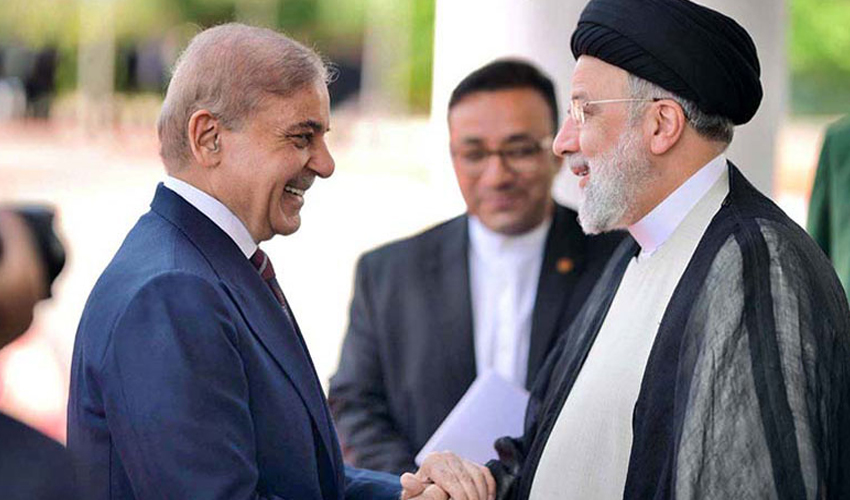Pakistan, Iran vow to expedite free trade deal, enhance border harmony: Joint declaration
Iranian President Raisi wraps up three-day visit to Pakistan
Iranian President Raisi wraps up three-day visit to Pakistan
The Israeli-American accused Israeli Prime Minister of making hurdles in a deal between Hamas and Israel.
Quetta’s street was renamed ‘Berlin Quetta Friendship Square’.
Veteran actor wants to impose a ban on such content if given authority
Prince William and Kate Middleton are resolute in ensuring that their children's happiness
It marks second and final tranche of a significant $3 billion standby arrangement extended last summer
Custodian of Islam's holiest sites admitted for medical examinations
Skipper stresses importance of maintaining player fitness and nurturing bench strength
NDMA asked farmers to be careful amid the wheat harvesting routines.
Iranian President Raisi wraps up three-day visit to Pakistan
Payments were made in the form of capacity charges which were received from the consumers in the electricity bills
Provincial Minister of Transport Bilal Akbar said 110 buses are under the import phase
Muhammad Ali Malkani said that vigilance teams should play an effective role
Virtual gaming takes center stage as Pakistan hosts esports championships
A case has been registered against the accused and the investigation is underway.
It marks second and final tranche of a significant $3 billion standby arrangement extended last summer
Skipper stresses importance of maintaining player fitness and nurturing bench strength
Veteran actor wants to impose a ban on such content if given authority
Honda and Boston Dynamics have been developing humanoid robots for several years
The Israeli-American accused Israeli Prime Minister of making hurdles in a deal between Hamas and Israel.
Doctor says habit of eating outside rather than home-cooked meals has also affected children's health
Study discovers that sound coming from a disturbed plant could be heard over a meter away
Implementing reporting standards 18 has its challenges, but offers long-term benefits

